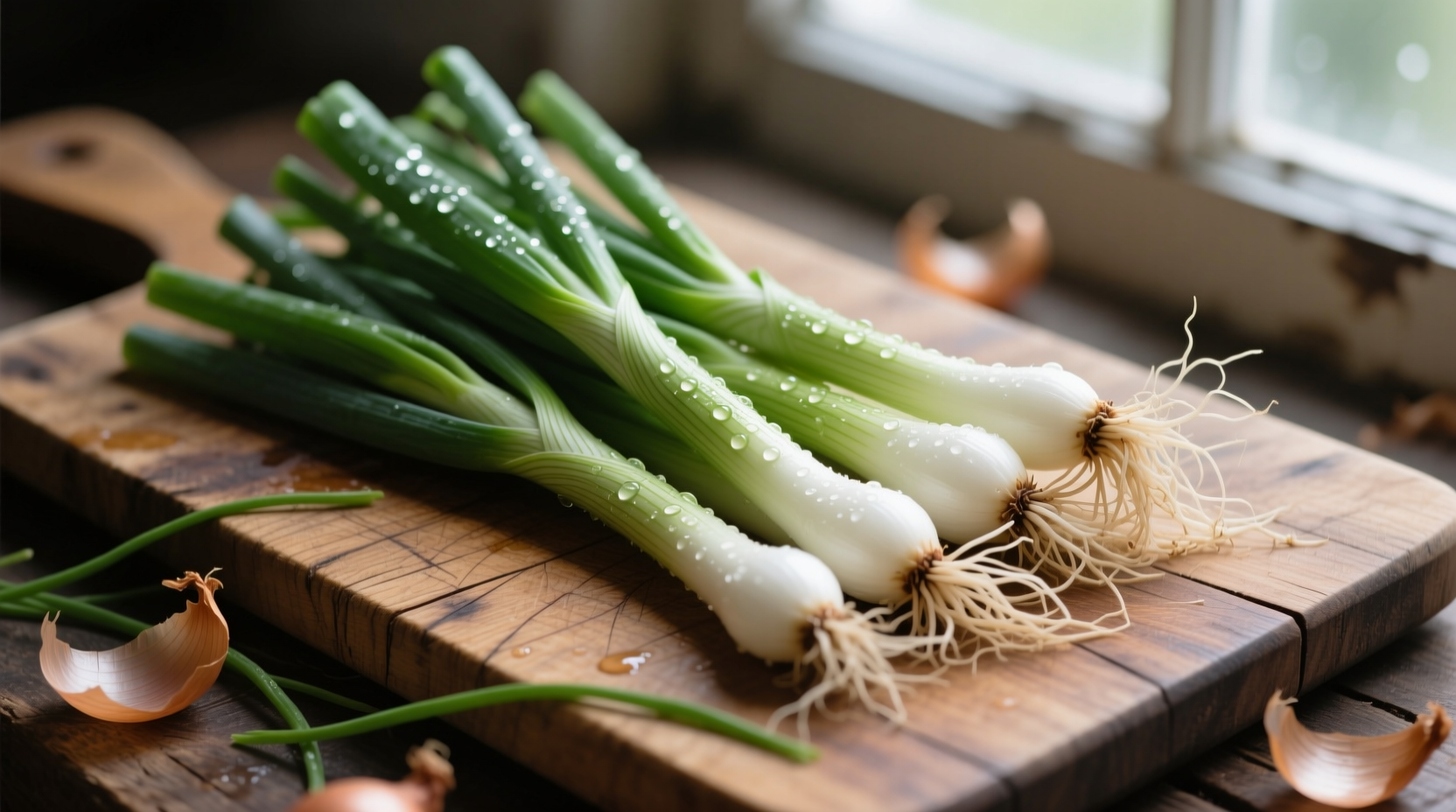Confused about whether scallions and spring onions are different ingredients? You're not alone. This common kitchen conundrum has sent countless home cooks scrambling through recipe substitutions and grocery store aisles. Let's clear up the confusion once and for all with practical guidance you can use immediately in your cooking.
Understanding the Botanical Reality
From a botanical perspective, scallions and spring onions refer to Allium fistulosum or very young Allium cepa (common onion) varieties harvested before the bulb matures. These slender green stalks with small white bases appear in markets year-round but earn the "spring" designation because they're among the first alliums available after winter.
Unlike mature onions that develop large, layered bulbs, scallions maintain their thin, cylindrical shape throughout growth. The entire plant—white base and green stalk—is edible, offering a mild onion flavor that intensifies toward the root end. This characteristic makes them versatile across culinary applications where stronger onion flavors would overwhelm delicate dishes.

Regional Naming Confusion Explained
The primary source of confusion stems from regional terminology differences rather than botanical distinctions. What one region calls "scallions," another might label "spring onions," creating unnecessary shopping dilemmas. This naming variation follows clear geographical patterns:
| Region | Common Term | Occasional Variations |
|---|---|---|
| United States | Scallions | "Green onions" most common alternative |
| United Kingdom | Spring onions | Rarely called scallions |
| Australia/New Zealand | Spring onions | "Shallots" sometimes misused |
| Canada | Both terms used interchangeably | Regional preference varies |
According to agricultural researchers at Cornell University's Cooperative Extension, this terminology inconsistency stems from historical trade patterns and linguistic evolution rather than botanical differences. Their field studies confirm that North American grocery stores typically stock identical products regardless of which term appears on the label (Cornell University Cooperative Extension).
Selecting the Freshest Specimens
When choosing between scallions and spring onions at your market, focus on visual quality indicators rather than labeling:
- Vibrant green color throughout the stalks without yellowing or wilting
- Firm, crisp texture when gently squeezed
- Moist, white root ends indicating recent harvest
- No flowering (bulbous flower heads indicate over-maturity)
University of California agricultural specialists note that freshness directly impacts flavor intensity—older specimens develop stronger, more pungent notes that can overpower subtle dishes (UC Agriculture and Natural Resources). For delicate applications like garnishing sushi or mixing into salad dressings, select the youngest, thinnest specimens available.
Proper Storage Techniques for Maximum Freshness
Improper storage causes premature wilting and flavor degradation. Follow these professional chef-tested methods:
- Refrigerator method: Trim roots, place upright in glass with 1 inch of water, cover loosely with plastic bag, change water every 2-3 days
- Drawer method: Wrap in slightly damp paper towel, place in vegetable drawer (lasts 7-10 days)
- Freezing option: Chop finely, freeze in ice cube trays with water or oil for cooking applications (not suitable for raw use)
USDA FoodData Central confirms that proper storage preserves both nutritional value and flavor compounds. Scallions maintain 95% of their vitamin C content when stored correctly for one week, compared to 60% loss with improper storage (USDA FoodData Central).
Culinary Applications and Substitution Guidance
The mild flavor profile makes scallions/spring onions incredibly versatile across cooking techniques:
Raw Applications
Use the entire stalk for:
- Garnishing soups and noodle dishes
- Adding freshness to salads and slaws
- Mixing into dips and dressings
- Creating vibrant salsas and relishes
Cooked Applications
Add at different stages for varying flavor impacts:
- Early addition: White portions in stir-fries for subtle background flavor
- Middle addition: Whole stalks in soups and stews for balanced flavor
- Finishing touch: Thinly sliced greens sprinkled over finished dishes for fresh aroma
When substituting in recipes, understand that scallions provide milder flavor than mature onions. As culinary expert Antonio Rodriguez explains: "For every 1 cup of chopped mature onion, use 1½ cups of chopped scallions to achieve similar flavor intensity without overwhelming other ingredients."
Nutritional Benefits Worth Noting
These slender alliums deliver impressive nutritional benefits beyond their flavor contribution:
- Rich in vitamin K (providing 20% of daily value per 100g)
- Excellent source of vitamin C and folate
- Contain allicin compounds with antioxidant properties
- Low calorie (32 calories per 100g)
- Provide dietary fiber (2.6g per 100g)
Research published in the Journal of Agricultural and Food Chemistry confirms that scallions contain higher concentrations of certain flavonoids than mature onions, particularly in the green portions often discarded by home cooks (Journal of Agricultural and Food Chemistry).
Common Mistakes to Avoid
Even experienced cooks make these frequent errors with scallions/spring onions:
- Discarding the green portions: The darker greens contain higher nutrient concentrations
- Overcooking: Heat destroys delicate flavor compounds—add greens in the last 2 minutes of cooking
- Improper chopping: Diagonal cuts expose more surface area for better flavor release
- Using as direct onion substitute: Requires quantity adjustment due to milder flavor profile
Professional chefs recommend reserving the root ends for homemade vegetable stock—they add subtle onion flavor without overpowering other ingredients. Simply freeze trimmings in a container until you have enough for your next stock batch.











 浙公网安备
33010002000092号
浙公网安备
33010002000092号 浙B2-20120091-4
浙B2-20120091-4